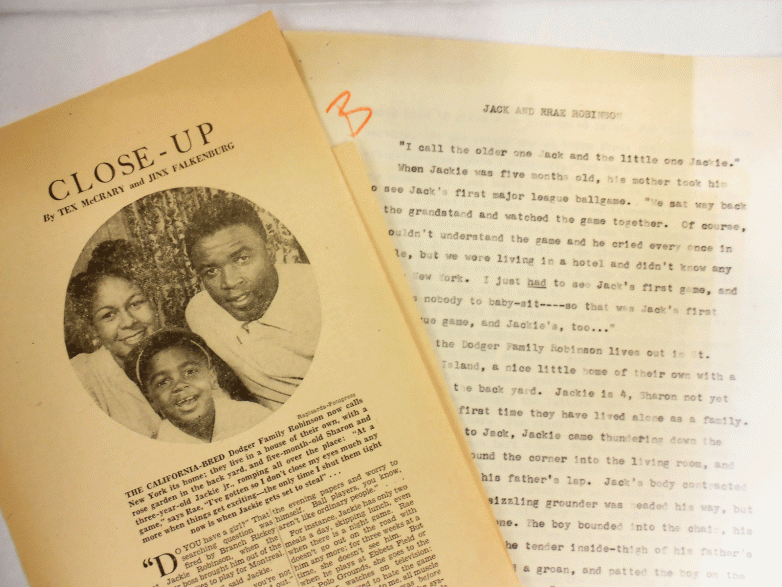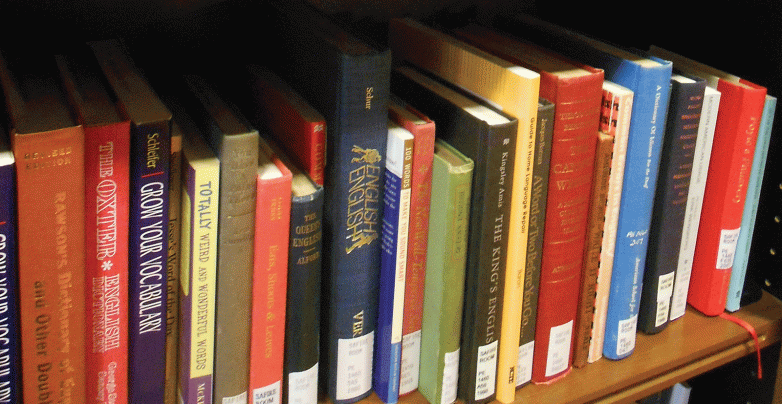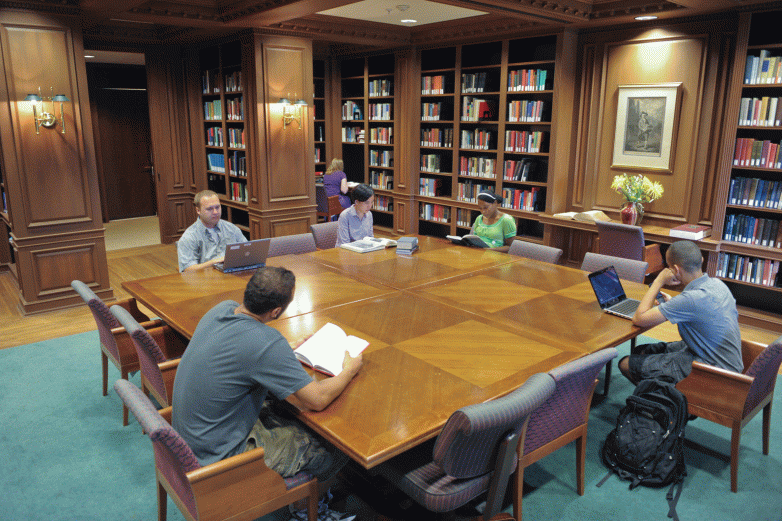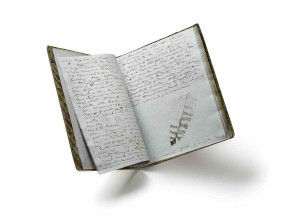The papers reveal many interesting aspects of Safire’s careers as a reporter and a public relations executive prior to his tenure with the New York Times. After dropping out of college, Safire was hired by public relations man Tex McCrary as a researcher and writer at the New York Herald Tribune. He wrote for the paper’s “Close-Up” column, where he interviewed many celebrities, such as Jackie Robinson and Marlon Brando. Although Safire performed much of the legwork for McCrary, he did not always have an easy time gathering usable material from his subjects. During one particular interview with Broadway producer George Abbott, Safire’s typewritten notes state that the “interview was long on chatter and short on material,” adding “whenever I would ask him a hot question, he would lean back in his chair, smile and say, ‘No, I don’t think I’m ready to bare my soul to the press.’”
The bulk of the papers relate to Safire’s tenure at the New York Times. He joined the staff in 1973 after being hired on the spot by publisher Arthur “Punch” Sulzberger as the paper’s new political columnist. Safire’s twice-weekly “Essay” column appeared on the Op-Ed page for thirty-two years and presented a libertarian conservative point of view. The Safire papers contain copies of all his columns, as well as reader responses. I found Safire’s essay, Blizzard of Lies, in which he calls Hillary Clinton a “congenital liar,” one of the most interesting because it elicited a full spectrum of spirited responses: nearly thirty folders of reader mail. Comments ranged from “Keep meddling Mr. Safire! Someone needs to bring the Clinton transgressions out in the open” to “Your characterization of the First Lady is an abuse of the free press. It demonstrates the need to return to the days of dueling, when big mouths had to be careful what they said.”
The collection also contains documents regarding Safire’s Sunday “On Language” column, which appeared in the New York Times Magazine for thirty years. The column featured Safire’s thoughtful and sometimes biting commentary on grammar, usage, and etymology. It also attracted many fans and devoted correspondents (dubbed the Lexicographic Irregulars) who helped research the origins of words and phrases. The collection includes photocopies, drafts, and correspondence from all of the columns, reader mail, and many research files. Research files make up the bulk of the “On Language” material and contain correspondence, media clippings, dictionary entries, hand-scribbled notes, and other documents used to construct each column.
Ben Chartoff, a graduate student at Syracuse University’s School of Information Studies, worked as a processing assistant to help organize nearly fifty linear feet of these research files. “When the files arrived,” Chartoff recalled, “they were only loosely alphabetized, and packed in a mish-mash of poorly labeled, overstuffed, acidic folders.” After spending two months alphabetizing, arranging, labeling, and organizing the files, he proudly stated, “They are a sight to be seen.”


















